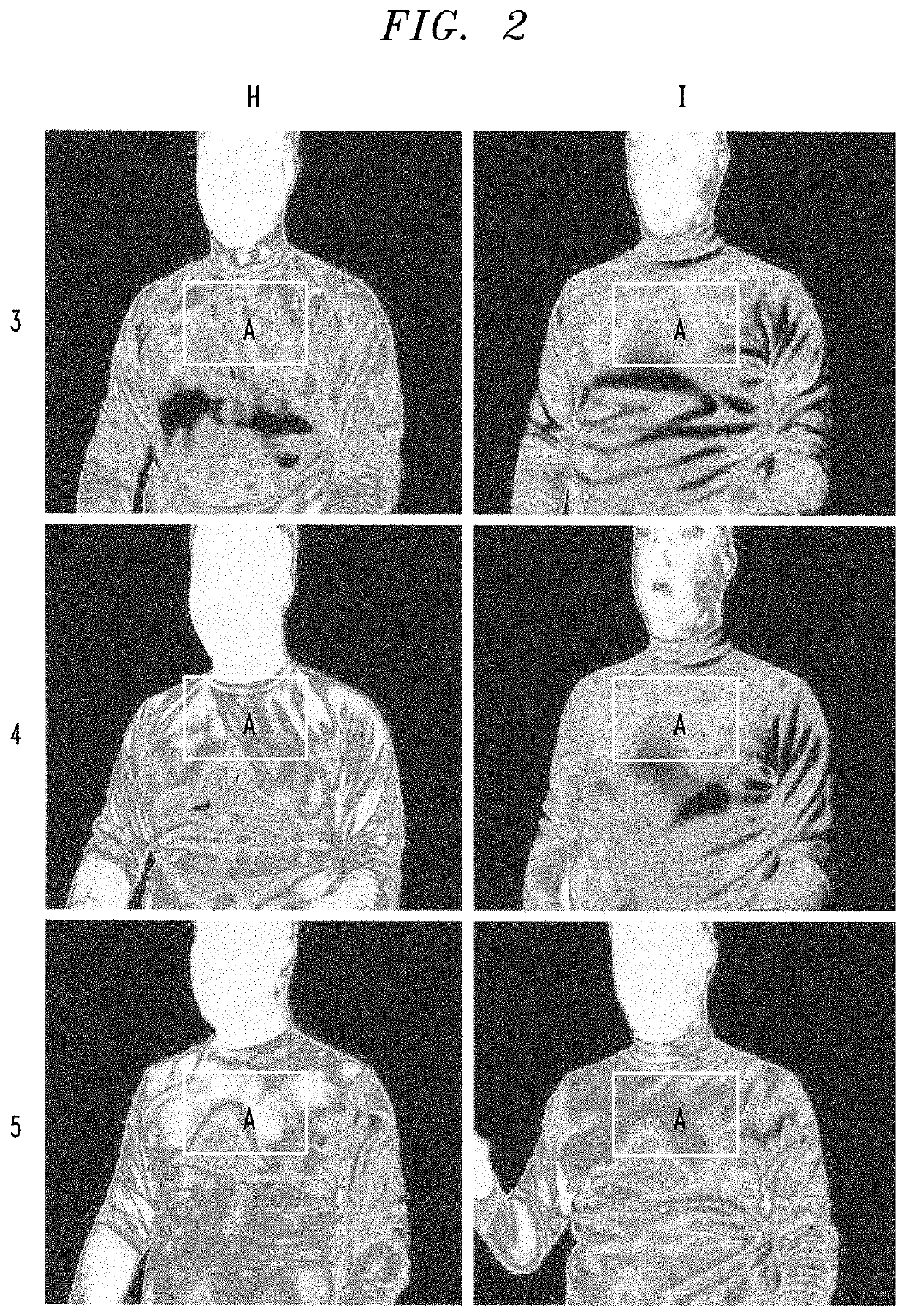Method for producing antimicrobial thermal and heat-retaining fiber, fiber produced by the method and fabric using the fiber
a technology of thermal and heat-retaining fibers and fibers, which is applied in the direction of textiles, textiles, papermaking methods, etc., can solve the problems of difficult application to the clothing industry, limited functionalities in terms of efficacy, and complex production of functional fibers, so as to prevent fiber breakage and prevent the effect of deterioration of wash fastness
- Summary
- Abstract
- Description
- Claims
- Application Information
AI Technical Summary
Benefits of technology
Problems solved by technology
Method used
Image
Examples
examples 1 to 15
[0053]A PET resin was fed into a main feeder of an extruder, and 0.5 wt % of a titanium alkoxide and carbon particles / inorganic particles were fed through a side feeder. The amounts of the carbon particles / inorganic particles are shown in Table 1. The resin, the titanium alkoxide, and the particles were melt-mixed in the extruder at high temperature to prepare a spinning solution. The spinning solution was melt-spun at a rate of 4000 m / min through a spinneret to produce a fiber having a fineness of 2 denier.
[0054]
TABLE 1Compositions of carbon particles and inorganicparticles in spinning solutions (wt %)Alumi-CarbonZincTitaniumnumTita-Alumi-powderoxideoxideoxideniumSilvernumExam-1——————ple 1Exam-11—————ple 2Exam-1—1————ple 3Exam-1——1———ple 4Exam-1———1——ple 5Exam-1————1—ple 6Exam-1—————1ple 7Exam-11————1ple 8Exam-2——————ple 9Exam-21————1ple 10Exam31————1ple 11Exam-41————1ple 12Exam51————1ple 13Exam-61————1ple 14Exam-62————1ple 15
[0055]When the total content of the inorganic powders in...
PUM
| Property | Measurement | Unit |
|---|---|---|
| diameter | aaaaa | aaaaa |
| diameter | aaaaa | aaaaa |
| size | aaaaa | aaaaa |
Abstract
Description
Claims
Application Information
 Login to View More
Login to View More - R&D
- Intellectual Property
- Life Sciences
- Materials
- Tech Scout
- Unparalleled Data Quality
- Higher Quality Content
- 60% Fewer Hallucinations
Browse by: Latest US Patents, China's latest patents, Technical Efficacy Thesaurus, Application Domain, Technology Topic, Popular Technical Reports.
© 2025 PatSnap. All rights reserved.Legal|Privacy policy|Modern Slavery Act Transparency Statement|Sitemap|About US| Contact US: help@patsnap.com


